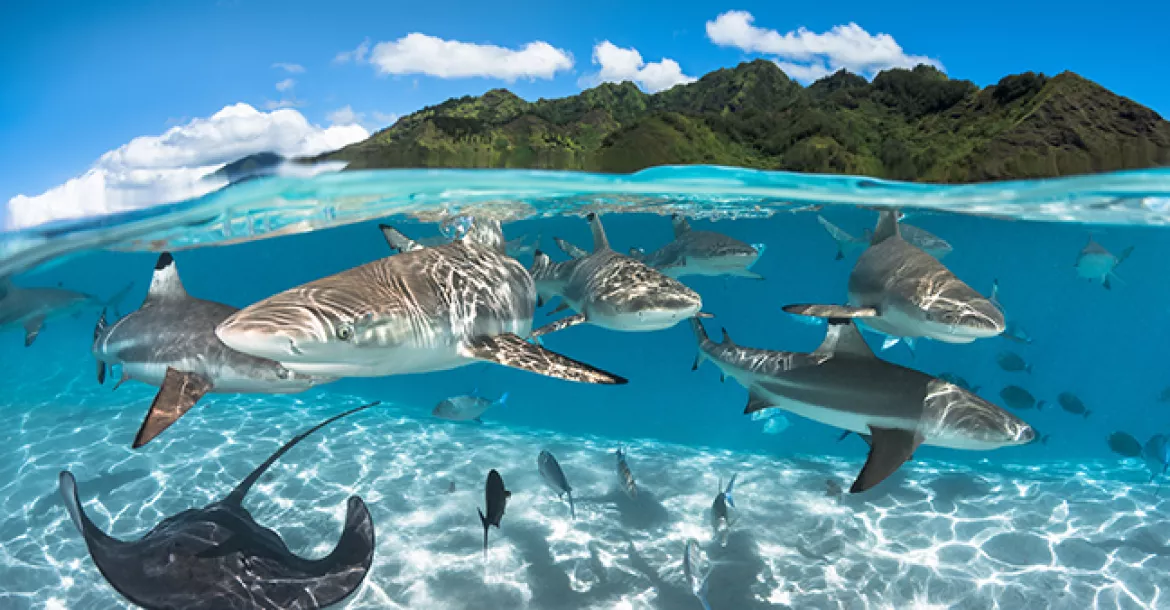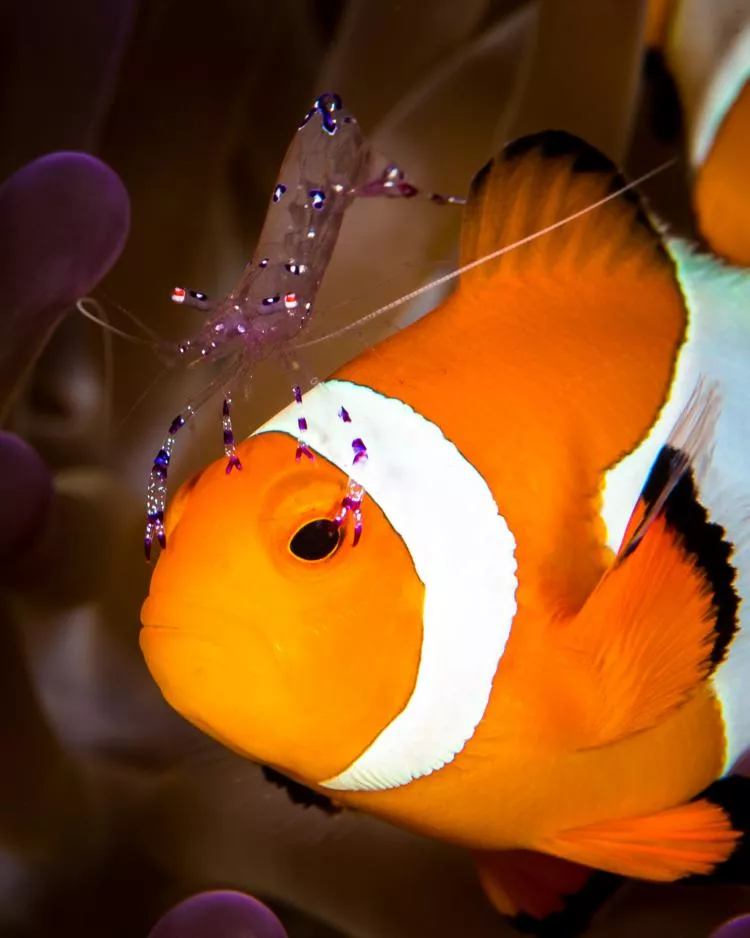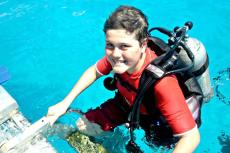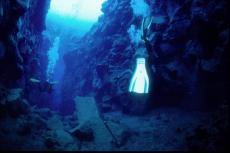In June at this year’s United Nations World Oceans Day photo contest, three of our regular contributors won awards. American photographer Beth Watson claimed the competition’s grand prize, the overall theme award “Healthy oceans, healthy planet”; French photographer Greg Lecoeur won first place in the Underwater Life category, second place in the Above Water Seascapes category and third place in the Underwater Seascapes category; and American photographer Brandi Mueller won third place in the Underwater Life category.
Contributed by
Here are the stories behind their winning shots.
Beth Watson
Safe House, Raja Ampat, Indonesia. My husband and I were diving the epic Birds Head Seascape region known as Raja Ampat, Indonesia. It was a blissful day and our next dive site was Citrus Ridge. This is a highly anticipated dive site known for its beauty and diversity.
From my previous experience, I knew mangroves grew on the shoreline and wanted to capture their beauty again. We dropped in on a gradual sloping wall, our dive group descended to explore the deeper area, but I headed towards the shallows where the mangroves trees adorned the shoreline. The visibility was good, the sun was shining and a few clouds were in the sky.
Experimenting with different camera settings, I dialed in the appropriate settings to balance the ambient light with a bit of strobe flash. Reflections are something that I enjoy capturing. I proceeded to work the shoreline in the hope of finding something interesting and eye-catching.
About 20 minutes into the dive, I crossed an inlet that led into the bay. On the corner was a beautiful grouping of mangroves. The arrangement was especially appealing because the sloping wall, soft corals and growth protruding from the sandy bottom would provide a foreground element, giving the image depth and dimension. I noticed three juvenile batfish hanging out underneath the mangrove canopy and knew there was potential to capture something special.
It was important to stay focused. I kept my left eye open, looking out for the occasional crocodile, and kept my right eye glued to the viewfinder, waiting and hoping for that magical moment when the batfish were in alignment. Several anxious minutes passed… then it happened. All three batfish turned magically, positioning themselves in the center of my viewfinder. The image was recorded, and after deliberation, the image was titled “Safe House.”

Greg Lecoeur
Green Turtle, Tenerife, Spain. Photographing marine life is not so easy and requires a lot of patience. But sometimes we are lucky and all the ingredients come together to achieve the expected image, as during this dive in Tenerife when the conditions were perfect. This green sea turtle decided to play like a model through the sunlight. So all that remained for me to do was to set the exposure and frame the shot!
Humpback Breach, Port Saint John’s, South Africa. During the Sardine Run event along the wild coast of South Africa, it is also the time for the migration of the humpback whales. I was looking for bait ball action when I spotted a big splash on the horizon. It was a humpback whale breaching. The whale was probably communicating with others mammals and didn’t stop breaching. It was spectacular to see how 40 tons came out of the water, while the light on the horizon provided something magical to the scenery.
Shark and Rays, Moorea, French Polynesia. French Polynesia is an amazing place for nature lovers. In the lagoon of Moorea, I was snorkeling with a lot of marine life, especially blacktip sharks and rays.
Brandi Mueller
Spa Day, Dumaguete, Philippines. Muck diving in the Philippines is always a treasure hunt and it is one of my favorite types of diving because you just never know what you might see. I was diving off Dumaguete, and at the very beginning of the dive, I was drawn to a vibrant purple anemone with two false clownfish swimming around it. I stopped to take a few shots and I noticed there were at least five or six tiny purple cleaner shrimp hopping around in the anemone as well.
With my eye looking through the viewfinder, I was waiting for one of the clownfish to look at me so I could snap a photo when I noticed one of the cleaner shrimp was moving closer to the clownfish. Finger on the shutter, I waited, and the shrimp hopped right onto the clownfish and started cleaning the fish. I snapped a shot, and the second my strobe lights went off, both the fish and shrimp darted off in opposite directions.
I wasn’t sure if I got the shot but I was hoping I might get another chance. So I waited, following the clownfish through my camera, to see if it would happen again. After about five minutes, they still hadn’t gone near each other. Evidently, the shy clownfish did not want any more photos during its bath time.
I was really excited to get back to my room and download the photos to see if it turned out. In the end, I was pleased with this one and only shot that I got with the shrimp on the clownfish.
Behavior and conservation
Observing cleaning behavior is one of my favorite things to see underwater. It always amazes me when an eel opens its mouth wide for a shrimp or wrasse to clean its teeth, but the eel resists making an easy meal of this food already in its mouth.
These acts of symbiosis show how delicate the balance of the ocean is. Every creature in the ocean is there for some purpose, so many of which we don’t have any idea. This is one of the reasons why ocean conservation is so important. We need to reduce threats to every part of the ocean because we don’t fully understand how it is all connected, and how even small changes may have huge negative impacts. That way we can all continue to observe these special connections in the underwater world. ■































